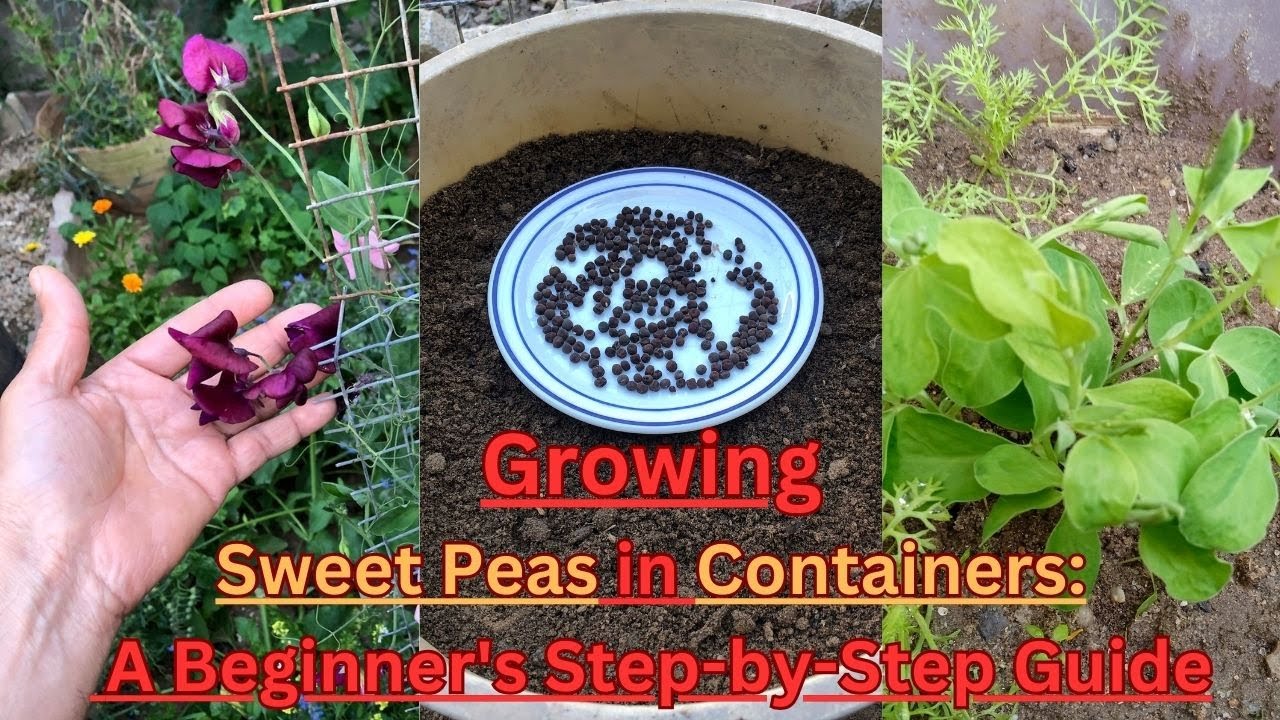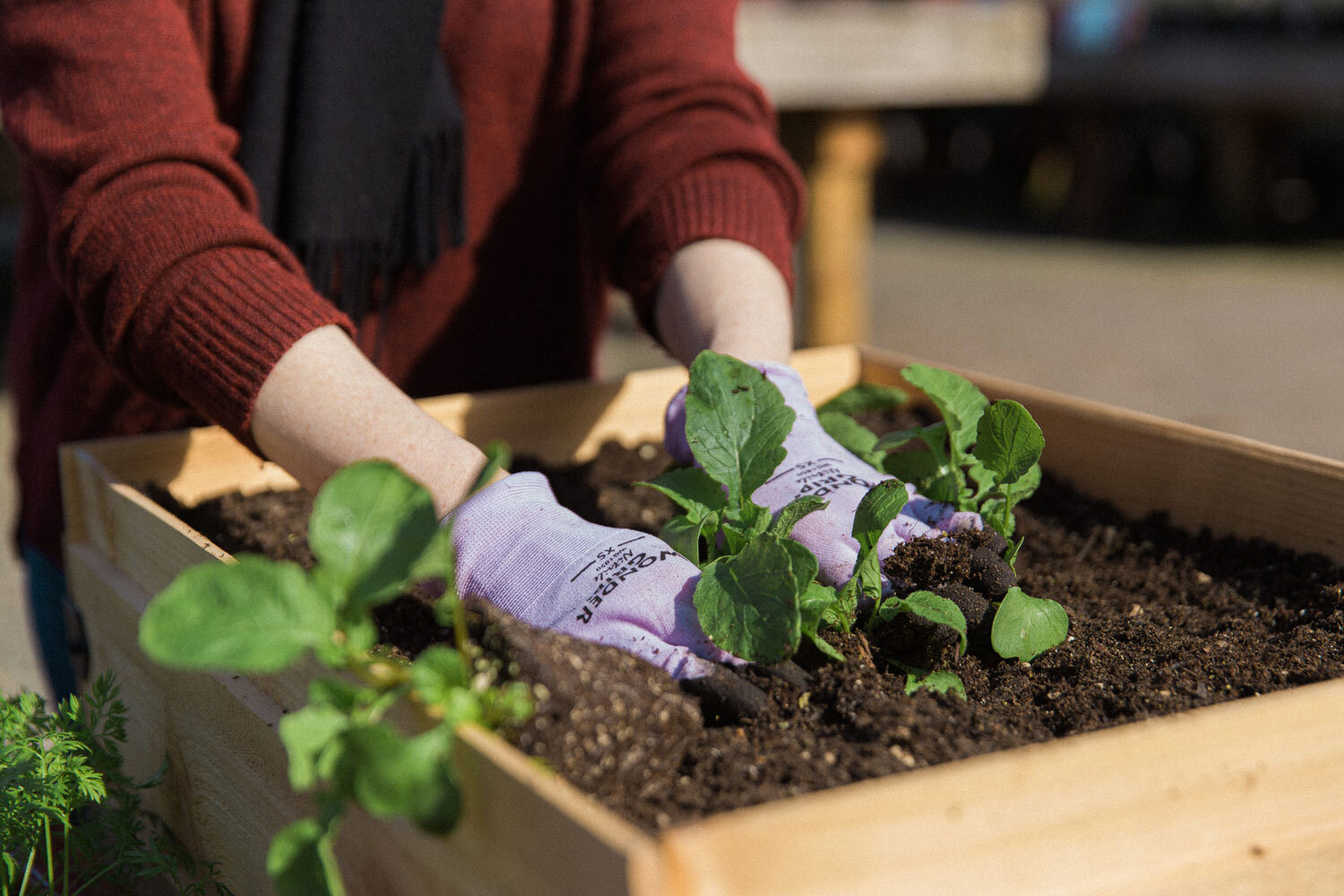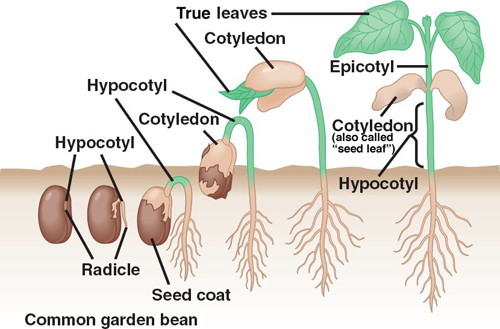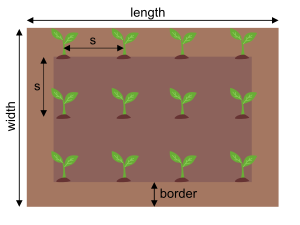Sweet peas (Lathyrus odoratus) are a delightful addition to any garden, known for their vibrant colors and enchanting fragrance. These charming flowers have been cherished by gardeners for centuries, adding beauty and a sweet aroma to garden spaces. But while they may look delicate, sweet peas are surprisingly hardy and can thrive with the right care. In this guide, we’ll explore how to grow sweet peas from start to finish, ensuring you can enjoy these lovely blooms in your own garden.
Understanding Sweet Peas
Before diving into the specifics of how to grow sweet peas, it’s essential to understand a bit about the plant itself. Sweet peas are native to the Mediterranean region and were first brought to England in the late 17th century. Over time, they have become a garden favorite worldwide, thanks to their wide range of colors and intoxicating scent.
Sweet peas are climbing plants, which means they will need some support as they grow. They produce delicate tendrils that wrap around anything they can, helping them climb upwards. There are both annual and perennial varieties, but the annual types are the most popular due to their abundant flowers and strong fragrance.
Step-by-step guide to growing sweet peas from seed

Scarification
Sweet pea seeds are known for having a tough outer seed coat, which can significantly delay or even inhibit germination. To improve germination rates and ensure your seeds sprout more uniformly, it’s highly beneficial to scarify the seeds before planting.
How to Scarify Sweet Pea Seeds:
- Nicking the Seed Coat: One effective method of scarification involves gently nicking the seed coat. You can do this using a small file, nail clippers, or even a sharp knife. The goal is to create a tiny break in the outer coat without damaging the seed inside. This allows water to penetrate the seed more easily, kickstarting the germination process.
- Soaking in Warm Water: Another popular method is soaking the seeds in warm water. The water should be around 50°C (122°F). Place the seeds in the warm water and let them soak for approximately 24 hours. This soaking process softens the tough seed coat, making it more permeable to moisture. Once softened, the seeds are more likely to germinate quickly when planted.
Scarification is a critical step in the cultivation of sweet peas, as it breaks the seed dormancy, allowing for faster and more uniform germination. By taking the time to scarify your seeds, you increase the chances of successful seedling development, leading to healthier and more vibrant plants.
Choosing and Preparing Planting Containers

Selecting the right containers and preparing them properly is essential for starting sweet pea seeds. The choice of containers and soil mix lays the foundation for healthy seedling growth and sets the stage for successful transplantation later on.
Selecting the Right Containers:
- Biodegradable Peat Pots: Biodegradable peat pots are an excellent choice for starting sweet pea seeds. These pots can be planted directly into the ground, which minimizes transplant shock by avoiding disturbance to the delicate roots of the seedlings. As the pot decomposes, it also enriches the soil, further benefiting the plant.
- Seedling Trays: Seedling trays are another viable option. They allow you to start multiple seeds in a compact space, and when it’s time to transplant, you can carefully move the seedlings to their final location. If you choose seedling trays, make sure they have good drainage to prevent waterlogging, which can harm the seedlings.
Preparing the Soil Mix:
- Well-Draining Potting Mix: Fill your chosen containers with a well-draining potting mix. This is crucial because sweet pea seedlings are prone to root rot if the soil is too heavy or retains too much moisture. A good potting mix will contain materials like perlite or vermiculite to enhance drainage.
- Enriching with Compost: To provide essential nutrients for the initial growth of your sweet peas, enrich the potting mix with compost. Compost adds organic matter to the soil, improving its structure and nutrient content, which supports the seedlings as they develop.
Germination conditions

Sweet peas thrive in cooler soil temperatures, ideally between 55°F to 65°F (13°C to 18°C). It’s best to plant sweet pea seeds in early spring, typically about 4 to 6 weeks before the last expected frost date in your area. This timing allows the seeds to establish strong root systems before warmer temperatures arrive. The cool temperatures facilitate optimal germination and seedling vigor.
Planting depth and spacing
Plant sweet pea seeds approximately 1 to 2 inches deep in the prepared pots or trays. You can sow 2 to 4 seeds per pot to increase the chances of successful germination. Space multiple pots or seeds 4 to 6 inches apart to ensure adequate room for growth and proper air circulation. Proper spacing is essential to prevent overcrowding, which can lead to poor air circulation and increased risk of disease.

Watering and soil moisture
After planting, water the pots thoroughly to ensure the soil is evenly moist but not waterlogged. Maintain consistent moisture levels until the seeds germinate, usually within 7 to 10 days under optimal conditions. Avoid letting the soil dry out completely, as this can hinder germination and seedling growth. Use a gentle spray or misting bottle to water the seeds initially, ensuring the soil remains moist. Consistent moisture is key to ensuring successful seed germination and early seedling growth.
Transplant preparation
Once the seedlings have developed several sets of true leaves and are approximately 4 inches tall, they are ready to be transplanted into your garden. Before transplanting, pinch off any flowers or buds that may have formed on the seedlings. This encourages the plants to focus their energy on developing strong root systems and lush foliage, promoting healthier growth and better flower production. Proper transplant preparation ensures that the seedlings are robust and ready to thrive in the garden environment.
Planting in the garden
Choose a sunny location in your garden with well-draining soil. Sweet peas thrive in full sun but can tolerate partial shade in hotter climates. Prepare the planting area by incorporating organic matter such as compost into the soil to improve its structure and fertility. Ensure the soil is loose and friable to facilitate root penetration and nutrient uptake. The right planting site and soil preparation are critical for the overall success of your sweet pea plants.
Supporting growth
Sweet peas are climbing plants that require support to grow upright and produce abundant flowers. Install a trellis, fence, or netting near the planting area to provide support for the vines as they grow. It’s essential to set up the support structure at planting time or shortly after transplanting to avoid disturbing the roots later on. Proper support not only helps the plants grow upright but also enhances air circulation and exposure to sunlight, leading to healthier and more productive plants.

Mulching and feeding
Apply a layer of organic mulch around the base of the sweet pea plants to help retain soil moisture, regulate soil temperature, and suppress weed growth. Feed the plants regularly with a balanced fertilizer or organic compost every 4 to 6 weeks during the growing season to promote vigorous growth and prolific flowering. Mulching also helps conserve soil moisture, reducing the frequency of watering during dry periods. Regular feeding and mulching are essential practices for maintaining healthy, vigorous sweet pea plants that produce abundant flowers.
Maintenance and care
Monitor the sweet pea plants regularly for signs of pests such as aphids or caterpillars. Use organic pest control methods if necessary to protect the plants without harming beneficial insects. Keep the soil consistently moist throughout the growing season, especially during hot weather, to support healthy plant growth and flower production. Deadhead spent flowers promptly to encourage continuous blooming and prevent seed formation, which can divert energy from flower production. Regular maintenance and care ensure that your sweet peas remain healthy and continue to bloom throughout the season.
Harvesting seeds
Towards the end of the growing season, allow some sweet pea flowers to mature and form seed pods on the vine. Harvest the pods when they turn brown and dry. Remove the seeds from the pods and store them in a cool, dry place for planting in the following season. Harvesting and saving seeds from your sweet pea plants allows you to enjoy these beautiful flowers year after year, preserving your favorite varieties and ensuring a continuous cycle of growth.
Other Considerations When Growing Sweet Peas
Companion Planting
Companion planting can enhance the growth of your sweet peas. Plants like lettuce, spinach, and radishes are great companions because they enjoy the cool growing conditions and can help shade the roots of your sweet peas, keeping them cool and moist.
Uses in the Garden
Sweet peas are incredibly versatile in the garden. They can be used to cover trellises, fences, or arches, creating a stunning vertical display. Their vibrant colors and sweet fragrance also make them a favorite in cutting gardens, where they can be harvested for indoor bouquets.
Challenges and Solutions
While learning how to grow sweet peas, you may encounter some challenges. For instance, hot weather can cause sweet peas to stop blooming. To extend the blooming season, plant in a location that receives afternoon shade and keep the roots cool with mulch. Additionally, if your plants aren’t flowering, they may need more phosphorus, so switch to a bloom-boosting fertilizer.
Growing sweet peas is a rewarding experience that can bring color, fragrance, and joy to your garden. By following these steps on how to grow sweet peas, you’ll be well on your way to enjoying a bountiful display of these beautiful flowers. Whether you’re a seasoned gardener or a beginner, sweet peas are a wonderful addition to any garden.

Related articles
Top 5 Spring Tree Pests: Identifying and Managing Common Threats
How to Grow Virginia Creeper: A Complete Guide
How to care for cyclamen from the expert
Detailed instructions: How to care for propagated plants
Understanding tree diseases: Identification, prevention, and treatment
Detailed instructions: How to care for fruit trees
Detailed instructions how to grow winter vegetables
How to propagate an aloe plant: a detailed guide to the methods